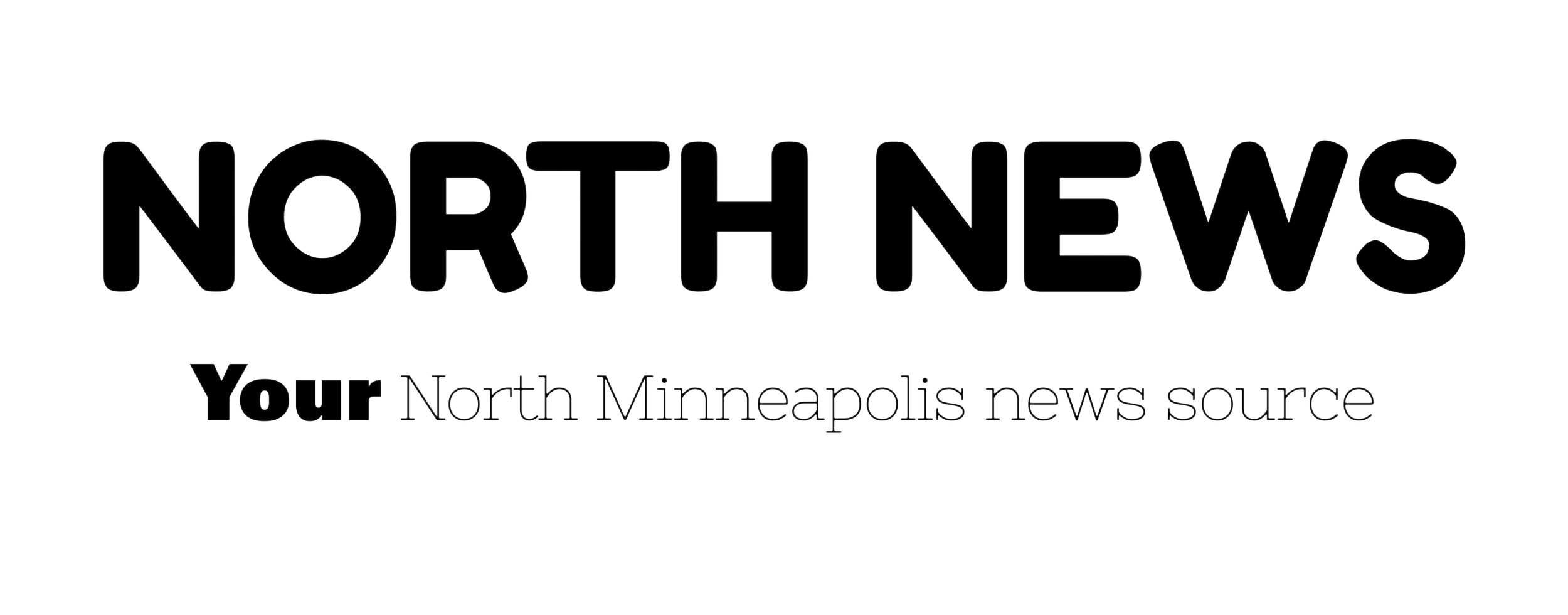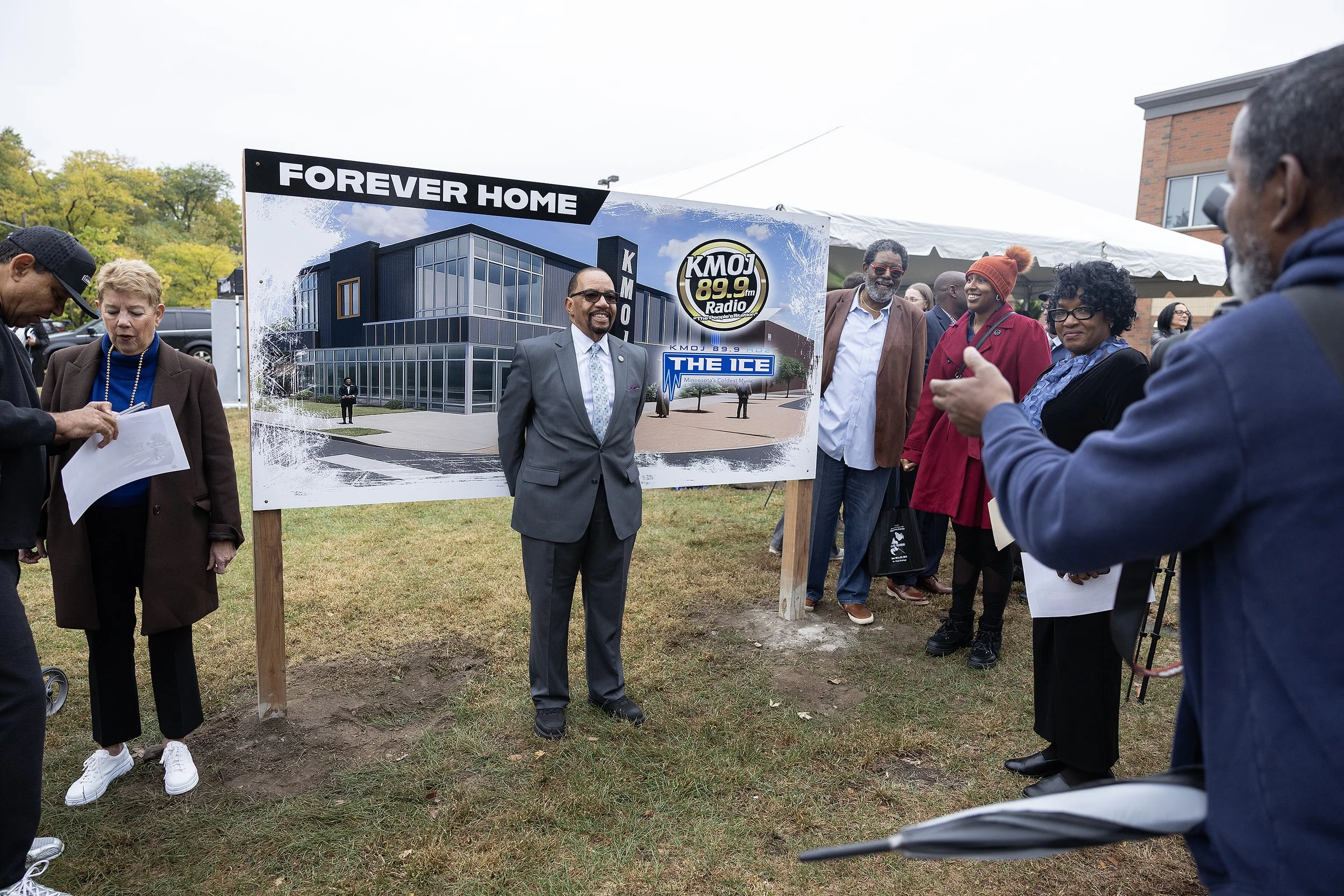‘The People’s Station’ will stay put on the Northside with a modern ‘forever’ home
KMOJ CEO Freddie Bell posed for pictures on the future site of the radio station’s forever home. Photo by David Pierini
By David Pierini, Editor
KMOJ Radio started with a 10-watt transmitter in the Sumner-Olson and Glenwood-Lyndale public housing developments on the Northside in 1976. To hear it, motorists had to drive close to the complex and residents had to move their radio antennas around to catch the signal.
In the beginning, the station went off the air at sundown.
The radio station grew and outgrew four different spaces it rented. And its signal grew with the station, today reaching across the Twin Cities and surrounding suburbs, but also online streaming, attracting listeners from around the world.
From the days of vinyl and 8-track, KMOJ played soul, R&B, blues, urban gospel, hip-hop, reggae, and jazz, and featured the music of budding local musicians who became bona fide stars. Think Prince, The Time, Alexander O’Neil and Mint Condition, to name a few of the many.
It offered talk radio before the genre was recognized and kept its listeners informed about important community news.
Big news from KMOJ came on Oct. 15, when The People’s Station held a ground blessing at 2125 Lowry Ave. for what will become the radio station’s “forever home.”
The station officially announced a $17 million capital campaign to build a state-of-the-art radio station. It will house the radio station, a community listening room, and offer access to podcasting equipment as a way to train the next generation of broadcast talent.
KMOJ hopes to be in its new facility by 2028.
It was a joyous occasion held under a canopy on a chilly morning. Each speaker was greeted with walk-up music, including Mayor Jacob Frey, who requested a Digable Planets song and told the crowd, “It’s about damn time.” KMOJ planted more permanent roots in North Minneapolis.
Walter “Q Bear” Banks greets friends during a dedication celebration for the future home of KMOJ radio. Photo by David Pierini
KMOJ’s two Hall of Fame broadcasters, Walter “Q Bear” Banks and station CEO and morning host Freddie Bell, generously praised the many names, past and present, who kept the station going from its early low-power AM days to the modern, far-reaching station it is today.
“I love every last one of y’all,” said Banks, who has worked behind the mic for more than 40 years. “I’ve got a lot more to tell y’all, so many stories about barbecues in the parking lot to just being in community and supporting one another.”
Banks said he would highlight members of the KMOJ family each day on his afternoon show.
State Sen. Bobby Joe Champion, who grew up with local musical legends like Prince and André Cymone, called KMOJ the soundtrack of Northside life.
In rapid-fire succession, Champion listed the many DJs, talk show hosts and musicians who graced the airwaves from the beginning to present.
“Do you know KMOJ remains the sole Black radio station in the state of Minnesota?” he said. “I want you to know that we’re standing here at a moment that is very important. Yes, we are celebrating KMOJ as a radio station, but we are committing ourselves to making sure that we are teaching the next generation.
“This radio station is the pulse of the Black community.”
When transit officials drew the route for the new Blue Line light rail extension down West Broadway in 2020, the Five Points Building was among the properties designated to be raised for the route. KMOJ was forced to search for a new home.
It was Champion, Bell said, who encouraged him and the Board of Directors to seek ground to build a facility the station could own.
Bell compared the decision to a significant life change that an adults face.
“You’re grown up now, you can do certain things you couldn't do when you were younger,” Bell said. “He (Champion) didn’t say those words, but he said in effect it's about time that KMOJ owned its own building and controlled its own destiny.
“From my perspective, the Blue Line is a blessing because it was the spark that helped us to decide our own destiny. So it doesn't really matter to us what the Blue Line does to the building. We’re committed
to having our forever home.”


